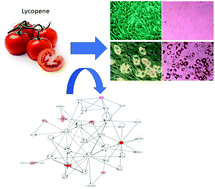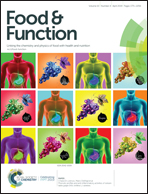Lycopene inhibits hepatic stellate cell activation and modulates cellular lipid storage and signaling
Abstract
Hepatic stellate cells are liver-specific perivascular cells, identified as the major source of collagen in liver fibrosis, following their activation and conversion to myofibroblast-like cells. Lycopene is a carotenoid with biological activities and protective effects described in different pathologies, but little is known about its role in liver protection. We evaluated the influence of lycopene on the cell cycle and lipid metabolism and monitored the possible pathways involved in lycopene inhibition of stellate cell activation. Lycopene induced expression of the lipocyte phenotype, with an accumulation of fat droplets in cytoplasm, with high synthesis and turnover of phospholipids and triglycerides. Cell proliferation analysis showed that lycopene reduced the growth of GRX cells. Lycopene induced an arrest in the G0/G1 phase, followed by a decrease of cells in the G2/M phase, regardless of the concentration of lycopene used. Lycopene modulated relevant signaling pathways related to cholesterol metabolism, cellular proliferation, and lipid metabolism. Also, lycopene treatment increased the expression of RXR-α, RXR-β, and PPARγ, important biomarkers of liver regeneration. These results show that lycopene was able to negatively modulate events related to the activation of hepatic stellate cells through mechanisms that involve changes in expression of cellular lipid metabolism factors, and suggest that this compound might provide a novel pharmacological approach for the prevention and treatment of fibrotic liver diseases.



 Please wait while we load your content...
Please wait while we load your content...